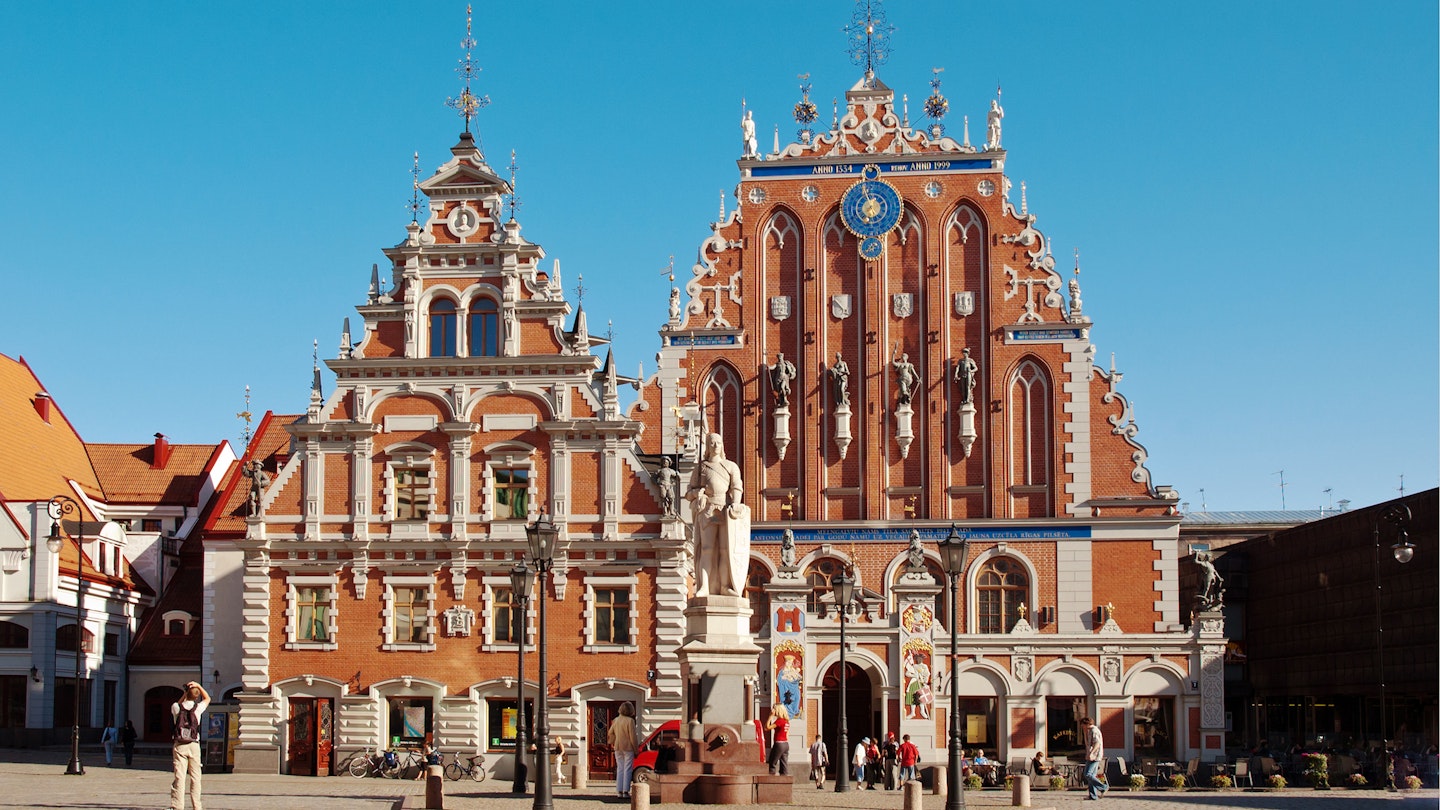Rīga, the capital of Latvia, can cast a spell on even the most experienced travelers. It’s a city where medieval mysteries live alongside contemporary art performances, and hundreds of Art Nouveau buildings line historic streets. Moreover, the city’s flourishing culinary scene offers both traditional Latvian dishes and modern Nordic cuisine. However, Rīga largely remains undiscovered by mass tourism, making it perfect for appreciating a tranquil and culturally rich city without the crowd.
Whether you prefer warm summer nights or fresh winter mornings, walking around art galleries or spending time in nature, visiting local bars or extravagant concert halls, Rīga offers it all.
When should I go to Rīga?
The best time for visiting Rīga is in the summer when everything is vibrant and green. During mid-June, the sun rises as early as 4:30 AM and sets as late as 10:20 PM. What could be better than sipping a sparkling drink on a terrace while listening to live music late into the evening? Summer in Rīga brings numerous open-air concerts and cultural events, most of which are free to attend.
If you enjoy cultural festivities, Rīga’s life peaks in August, when the city celebrates its anniversary with a wide range of events. With average temperatures between 20°C to 25°C (68°F to 77°F), and rarely exceeding 32°C (90°F), Rīga becomes an excellent summer destination, ideal for escaping the heatwaves of southern countries.
For those not afraid of cooler weather, other seasons also offer unique experiences. Late spring blooms with wonderful blossoms in parks, while early autumn paints the city in golden hues. Winter can be magical with a marvelous Christmas atmosphere filled with craft markets and enchanting snowflakes. It’s best to avoid Rīga in November or February, which tend to be the dreariest months.
How much time should I spend in Rīga?
If you only have a weekend in Rīga, you can still cover the most important sites. Explore the charming cobblestone streets of Vecrīga (Old Town), home to a variety of architectural styles from Gothic to Modern. Must-see sites include the House of the Blackheads, St. Peter’s Church, and Rīga Dome Cathedral. Take time to enjoy the scenic canal and the impressive Freedom Monument.
Additionally, don’t miss the famous Art Nouveau district around Alberta Street—a captivating area sure to leave you in awe. Your visit should include Rīga’s renowned museums like the Latvian National Museum of Art and the Museum of the Occupation of Latvia.
Extending your visit by a couple of days allows for a slower pace and explorations beyond the main attractions. Cross the Daugava River to Āgenskalns, a once-poor district that has transformed into a creative haven known for its picturesque wooden architecture. You can even take a tram to Mežaparks, which offers lush greenery and the chance to relax by Lake Ķīšezers.
Is it easy to get in and around Rīga?
Rīga Airport, as the largest in the Baltic states, serves as a convenient entry point whether you are visiting Latvia, Lithuania, or Estonia. Once at the airport, the city bus No. 22 provides an economical transportation option to the city center (about 30 minutes). Other alternatives include shuttle buses, taxis, or car-sharing services like Bolt Drive.
For those traveling from other European cities, long-distance bus services like LuxExpress and FlixBus connect Rīga to nearby capitals. Rīga is a walkable city with most tourist attractions centralized, allowing visitors to explore on foot easily.
Top things to do in Rīga
See Rīga from different angles
Rīga is rich in diverse architecture, and experiencing it from various perspectives is essential. After exploring Old Town, choose a viewing platform such as the Latvian Academy of Sciences or St. Peter’s Church for a breathtaking bird’s-eye view. Alternatively, consider renting a kayak for a unique angle from the canal and Daugava River, with the AB Dam or the National Library of Latvia offering stunning panoramas.
Sample Latvian cuisine in beautiful markets
Rīga is famous for its vibrant markets, filled with fresh produce and artisanal foods. The Rīga Central Market, one of the largest in Europe, beckons food enthusiasts to indulge in local delicacies such as rupjmaize (rye bread), smoked fish, and pickled vegetables. Each market offers a unique culinary journey worth exploring.
Embrace the local music scene in Rīga
No visit to Rīga is complete without immersing yourself in the local music scene. Classical music lovers can enjoy performances at the Latvian National Opera and Ballet, while alternative music enthusiasts might find hidden gems at local bars. Additionally, exploring the Latvian National Museum of Art and visiting cultural sites such as the Ethnographic Open-Air Museum adds depth to your experience.
How much money do I need for Rīga?
Rīga is an affordable destination catering to all budgets. Visitors often describe it as a hidden gem—beautiful, uncrowded, and reasonably priced when compared to other European capitals. Free tours, riverside strolls, and local museums offer plenty of budget-friendly activities, while high-end restaurants and hotels cater to those seeking luxury.
- Dorm Bed: from €15
- Basic Hotel Room for Two: from €30
- High-End Hotel Room for Two: from €100
- Self-Catering Apartment: from €30
- Public Transportation Ticket: €1.50
- Museum Ticket: €2-€10
- Opera or Ballet Ticket: €20-€55
- Theater Ticket: €15-€55
- Concert Ticket: from €15
- Coffee: €2-€4
- Pastries: €1-€4
- Main Course Meal: from €12
- Beer: €3-€5
What language is spoken in Rīga?
Latvian is the official language, yet English is widely spoken, especially in tourist areas, ensuring easy communication. Museums and services in cafés and restaurants usually have English translations available. While Latvians may initially seem reserved, they are often warm and hospitable once you engage with them.
Can you drink the tap water in Rīga?
The tap water in Rīga is clean and safe to drink. Bringing a refillable water bottle and staying hydrated while minimizing plastic waste is highly encouraged.





